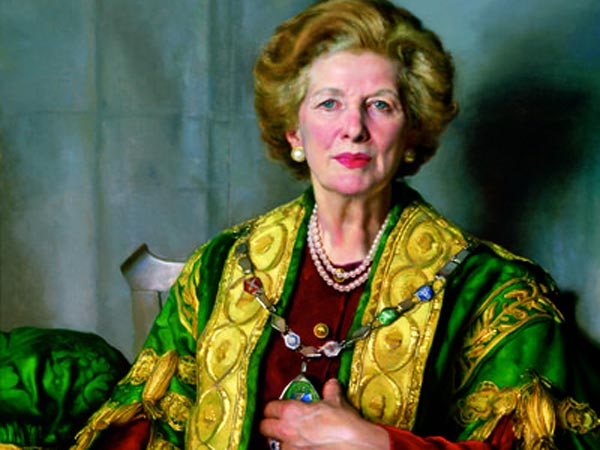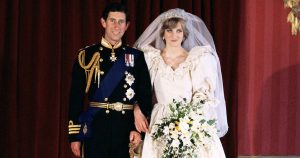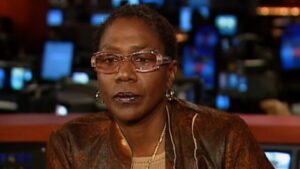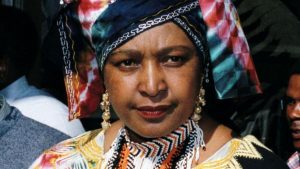The United Kingdom’s first and thus far only female prime minister.
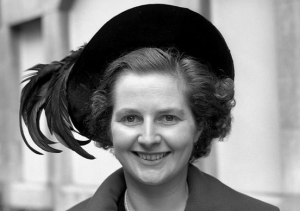
Margaret Hilda Thatcher, Baroness Thatcher was born in Grantham, Lincolnshire, England to a local businessman. She was educated at the local grammar school, ‘Grantham Girls’ High School’.

Her family operated a grocery store and they all lived in an apartment above the store. In her early years, Thatcher was introduced to conservative politics by her father, who was a member of the town’s council.
She was a good student and as such got accepted to Oxford University, where she studied chemistry at Somerville College. One of her instructors was ‘Dorothy Hodgkin’, a Nobel Prize-winning scientist. She earned a degree in chemistry in 1947.

Being politically active in her youth; she served as president of the Conservative Association at the university and was a research chemist before becoming a barrister, two years after graduating from college.
Thatcher made her first bid for public office when she ran as the conservative candidate for a Dartford parliamentary seat in the 1950 elections. Thatcher knew from the start that it would be nearly impossible to win the position away from the liberal Labor Party; but she still she earned the respect of her political party peers with her speeches. She was defeated, but remained undaunted, trying again the following year, but once more her efforts were unsuccessful. And two months after her loss, she married Denis Thatcher.

In 1952, Thatcher put politics aside for a time to study law and she and her husband welcomed twins Carol and Mark the following year.

After completing her training, Thatcher qualified as a barrister in 1953. But she didn’t stay away from the political arena for too long.
Thatcher won a seat in the House of Commons in 1959, representing Finchley. With Edward Heath as her Secretary of State for Education and Science in his Conservative government. She was appointed parliamentary undersecretary for pensions and national insurance in 1961; and when the Labor Party assumed control of the government, she became a member of what is called the Shadow Cabinet, a group of political leaders who would hold Cabinet-level posts if their party was in power.
When Conservatives returned to office in June 1970, Thatcher was appointed secretary of state for education and science, and dubbed “Thatcher, milk snatcher,” after her abolition of the universal free school milk scheme. She found her position frustrating, not because of all the bad press around her actions, but because she had difficulty getting Prime Minister Edward Heath to listen to her ideas.

While the Conservative Party lost power in 1974, Thatcher became a dominant force to reckon with in the polity. She was elected leader of the Conservative Party in 1975, beating out Heath for the position and became the first woman to lead a major political party in the United Kingdom.
She became Prime Minister after winning the 1979 general election.
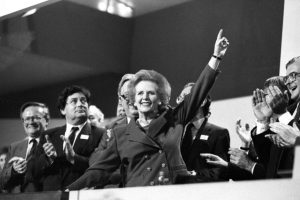
With this victory, Thatcher became the first woman to serve as the opposition leader in the House of Commons. England was in a time of economic and political turmoil, with the government nearly bankrupt, with unemployment on the rise and conflicts with labor unions. This instability helped return Conservatives to power in 1979.
As a party leader, Thatcher made history in May 1979, when she was appointed Britain’s first female prime minister.

As prime minister, Thatcher battled the country’s recession by initially raising interest rates to control inflation. She was best known for her destruction of Britain’s traditional industries through her attacks on labor organizations such as the miner’s union, and for the massive privatization of social housing and public transport. One of her staunchest allies was U.S. President Ronald Reagan, a fellow conservative. The two-shared similar right-wing, pro-corporate political philosophies.
Thatcher faced a military challenge during her first term. In April 1982, Argentina invaded the Falkland Islands. This British territory had long been a source of conflict between the two nations, as the islands are located off the coast of Argentina. Taking swift action, Thatcher sent British troops to the territory to retake the islands in what became known as the Falklands War. Argentina surrendered in June 1982.

In her second term, from 1983 to 1987, Thatcher handled a number of conflicts and crises, the most jarring of which may have been the assassination attempt against her in 1984. In a plot by the Irish Republic Army, she was meant to be killed by a bomb planted at the Conservative Conference in Brighton in October. Undaunted and unharmed, Thatcher insisted that the conference continue, and gave a speech the following day.

In 1987, Thatcher sought to implement a standard educational curriculum across the nation and make changes to the country’s socialized medical system. However, she lost a lot of support due to her efforts to implement a fixed rate local tax—labeled a poll tax by many since she sought to disenfranchise those who did not pay it. Hugely unpopular, this policy led to public protests and caused dissention within her party.
Thatcher initially pressed on for party leadership in 1990, but eventually yielded to pressure from party members and announced her intentions to resign on November 22, 1990.
In a statement, she said, “Having consulted widely among colleagues, I have concluded that the unity of the Party and the prospects of victory in a General Election would be better served if I stood down to enable Cabinet colleagues to enter the ballot for the leadership. I should like to thank all those in Cabinet and outside who have given me such dedicated support.” On November 28, 1990, Thatcher departed from 10 Downing Street, the prime minister’s official residence, for the last time.
Not long after leaving office, Thatcher was appointed to the House of Lords, as Baroness Thatcher of Kesteven, in 1992. She wrote about her experiences as a world leader and a pioneering woman in the field of politics in two books: The Downing Street Years (1993) and The Path to Power (1995). In 2002, she published the book Statecraft, in which she offered her views on international politics.

Around this time, Thatcher suffered a series of small strokes. She then suffered a great personal loss in 2003, when her husband of more than 50 years, Denis, died.

And in 2005, she celebrated her eightieth (80) birthday at a huge event held in her honor and attended by Queen Elizabeth II, Tony Blair and nearly 600 other friends, family members and former colleagues.

Two years later, a sculpture of the strong conservative leader was unveiled in the House of Commons.

Thatcher spent two weeks in the hospital for a condition that was later revealed to cause painful muscle inflammation in November 2010. In 2011, she sat out such a number of major events, including the wedding of Prince William in April, and the unveiling of the Ronald Reagan sculpture in London in July. Additionally, in July 2011, Thatcher’s office in the House of Lords was permanently closed.
The closure has been seen by some to mark the end of her public life. Battling memory problems in her later years due to her strokes, Thatcher retreated from the spotlight, living in near seclusion at her home in London’s Belgravia neighborhood.
Margaret Thatcher died on April 8, 2013, at the age of 87. She was survived by her two children, Daughter Carol and son Sir Mark.
Thatcher’s policies and actions continue to be debated by detractors and supporters alike, illustrating the indelible impression that she has left on Britain and nations worldwide.
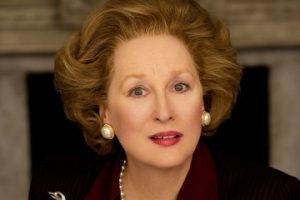
She was a British stateswoman who served as Prime Minister of the United Kingdom from 1979 to 1990 and Leader of the Conservative Party from 1975 to 1990. She was the longest-serving British prime minister of the 20th century and the first woman to have been appointed. A Soviet journalist dubbed her the “Iron Lady”, a nickname that became associated with her uncompromising politics and leadership style.
The United Kingdom’s first and thus far only female prime minister.



